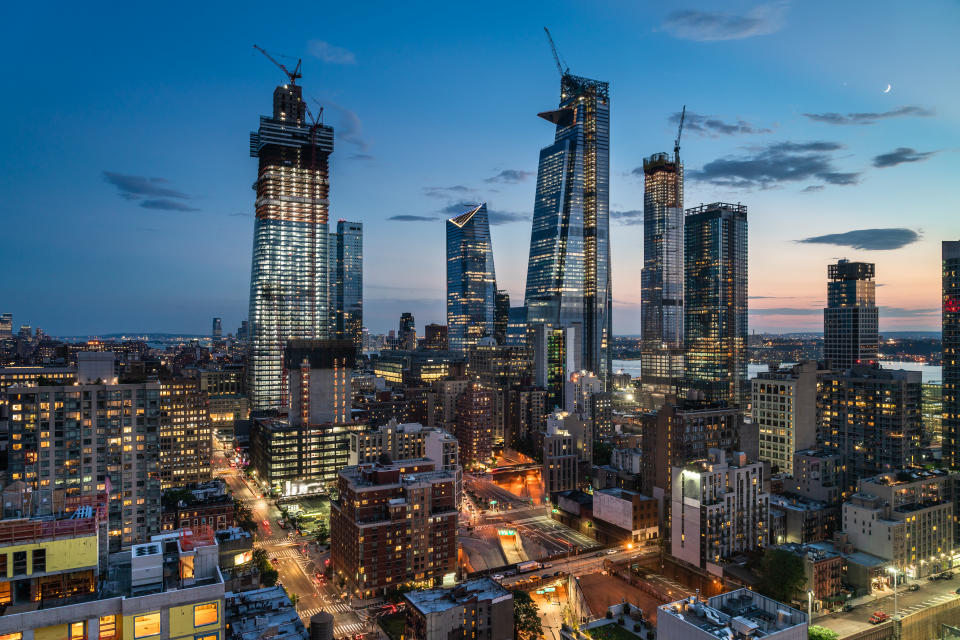Real estate developers are slow to make buildings 5G-enabled
Super fast 5G cellular networks are hot as major wireless carriers from Verizon to AT&T deploy the service, but it’s unclear if the infrastructure is in place for in-home 5G to replace current cable-based broadband.
The 5G-enabled future seems kind of distant. Real estate developers would need to put fiber-optic cables in homes and office buildings, since 5G doesn’t pass through walls, windows, or people. And most developers are not constructing projects or retrofitting existing properties that would allow 5G to be delivered to homes because it’s simply too expensive to implement.
“Not many developers that we speak to are taking 5G into account when constructing new ground-up developments,” said Chen Konfino, founder of Younity, a Tel Aviv-based company that installs internet infrastructure in multifamily buildings.
Fiber-optic cables, which run through the walls and the floors of buildings, are required to receive 5G signals indoors, according to Dan Littman, principal of technology, media and telecommunications at Deloitte Consulting LLP. And only some developers like The Related Companies are willing to pay for the infrastructure. Related’s massive Hudson Yards 28-acre mixed-use development in New York City is wired for 5G.

Installation is too pricey
Most builders just opt for traditional internet solutions because it’s affordable. Between conduits, splices, cables, and installation, 5G capability can be a five- or six-figure investment.
From 2003 to 2017, the median budget for a fiber-optic cable installation project, ranging from .6 to 10 miles of cable, was $66,940, according to a U.S. Department of Transportation survey of 150 fiber optic installations. Konfino said he recently completed two fiber-optic cable installations in 30- to 40-foot buildings for about $100,000 each.
Even retrofitting existing buildings is a pricey endeavor. It costs about 30% more than a regular renovation, taking into account demolition, renovation, and improved telecommunication closets, said Konfino. And the costs skyrocket when a building is more than a mile away from the closest fiber-optic internet line, according to a post by Atlantech, a Maryland-based fiber optics and telecommunications company.

The return on investment
As one of the few developers making 5G-enabled properties like Boston’s Lovejoy Wharf luxury condominiums and New York City’s Equinox Hotel, Related said the high costs are worth the investment.
“Expense is always a factor. We would never mindlessly invest in infrastructure that we didn’t think would be foundationally important,” said Scott Evans, chief digital officer of Related. Fiber-optic cables will only become increasingly necessary as the infrastructure behind future innovations, added Kenneth Finnegan, chief technology officer of Related.
Fiber broadband cuts down on long-term maintenance costs for building owners. It also allows owners to charge more rent and increases the value of properties. According to Connected Real Estate Magazine, owners can increase rent by an average of 8% and property values are boosted by an average of 2.8%, if the properties are 5G-enabled.
“I think there’s going to be a price concern for landlords and property owners, but I think there will be a demand for this infrastructure,” said Mike Baumstein, deputy head of Barings’ Private Equity and Real Assets team, an investment firm that recently invested in Gigasphere, a fiber-optic telecommunications company serving the multifamily and commercial real estate industries. “Eventually, they [building owners] will have to make an investment to keep their properties updated and competitive.”
But smaller developers still say the cost is too high. Josh Schuster at New York-based Silverback Development uses traditional methods like routers and cell phone repeaters that allow only 4G into buildings, according Schuster.
“There is a cost-benefit analysis. Right now, there are inexpensive ways to include technology in design and construction,” he said. “We definitely incorporate that.”
Sarah Paynter is a reporter at Yahoo Finance. Follow her on Twitter @sarahapaynter
Read the latest financial and business news from Yahoo Finance
Follow Yahoo Finance on Twitter, Facebook, Instagram, Flipboard, SmartNews, LinkedIn, YouTube, and reddit.
More from Sarah:
The world’s biggest co-living space offers a hangover drip, ‘sky pool’
What Airbnb’s recent move in Hawaii means for its issues in other states
Facebook comes under fire for housing discrimination and redlining

